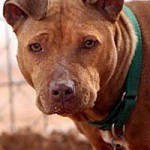Written by Senior Editor Peter Gehr
How to deal with dog aggression and lack of exercise. The very title of this article addresses the problem and the solution. In other words, if you have an aggressive dog, it’s usually because of a lack of exercise and attention. Aggression should not be tolerated from the very beginning and needs to be dealt with to help your pet understand that this is not acceptable behavior. Unfortunately, a lot of people get a dog, play with him when he’s a puppy, and once he’s grown out of the puppy stage, they leave him to himself and give the reign over the backyard. Or, in some cases, he’s chained with little access to space.
Your dog will rule the backyard like he owns it, and anyone walking passed your house will soon become enemies and threats to his domain, and his aggression will increase and blow completely out of proportion.
Daily and regular time and effort with your dog from day one will give your pet both the stimulation of exercise, and the security and trust he feels from you will establish his behavior and structure his mentality.
Aggression is all too often the fault of the pet owner who has either neglected the dog, or encouraged the dog to behave like that from day one.
How to Deal with Dog Aggression and Lack of Exercise
Here are some great tips from one of the best, Cesar Millan:
Dog aggression is a major problem for dog owners. Dog aggression stems from the dog’s frustration and dominance. The dog’s frustration comes from a lack of exercise, and the dog’s dominance comes from a lack of calm-assertive leadership.
Breed and Dog Aggression
I deal with a lot of red zone dog behavior cases, and I often hear people incorrectly blaming the breed. Any breed can cause trouble. The difference between an aggressive Chihuahua and an aggressive pit bull is that the bigger breeds can cause proportionately bigger damage.
It is important to recognize the power of a strong breed, like the pit bull, the Cane Corso, and the Mastiff. These dogs are very powerful and, if they are unbalanced, they can cause serious injury. Bad things happen when powerful breeds (or mixes of powerful breeds) live with humans who like the breed but don’t understand and fulfill the animal in the dog. Many people consider the look or popularity of a breed before thinking about whether the dog works for their lifestyle. This is a recipe for disaster.
To control a powerful breed, you need to become the dog’s pack leader and establish rules, boundaries, and limitations.
Fear-Aggressive Dogs
For many of these dogs, it is a lack of adequate exercise that is the root of the problem dog behavior. Physical activity burns the dog’s excess energy and helps maintain his healthy state of mind. This is important because, in order to talk to the mind, you need to remove the energy from the body.
Dog-Aggressive Dogs
Your dogs are asking you to step up as the pack leader. Animals select pack leaders because they instinctually know who is strong and who can best lead them. An animal pack leader is concerned for the pack, not for himself. His natural instincts are protection and direction for the entire pack. It’s an unselfish role and an instinctual role. And in return, the pack completely trusts the pack leader. You need to earn your dogs’ trust, loyalty, and respect before they will look to you as their leader and you do this by giving them rules, boundaries, and limitations.
Red Zone Dogs
It is important to understand that red-zone dogs are usually frustrated animals. To control a powerful breed, you need to master the position of pack leader. The sheer size and strength of a pit bull, Mastiff, Cane Corso, Rottweiler, or any other large dog can quickly transform a frustrated and dominant animal into a serious threat. You must gain control of the situation and dog behavior before it escalates. (Original story here)
How to deal with dog aggression and lack of exercise will be measured by your consistence and dedication. If you’ve let this happen to your dog, it is a matter of you making the necessary changes for your dog to change. The responsibility is yours, and it’s vital for you to regain the assertion of the dog’s leader. An aggressive dog is a threat to society, and it’s only a matter of time when someone is bitten or terrified by it. It doesn’t have to be that way, and the best time to start training your dog against aggression is from the day you bring the dog home to your family.


